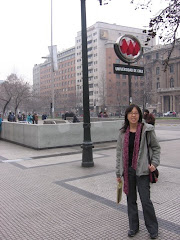by Fernanda Santos
Carlos Ruano was down to his last $50 when his landlord kicked him out in September because he could no longer pay rent. He sent the money to his wife and children in Guatemala and spent the night riding the E train, which has a nickname among his fellow day laborers in Woodside, Queens: “hotel ambulante,” Spanish for roving hotel.
Mr. Ruano, 38, who had drawn his living from 69th Street and Broadway for six years, has been on the streets since. He and other hard-luck day laborers have slept wherever they can: in the emergency room at Elmhurst Hospital Center, in unfinished buildings abandoned by bankrupt developers and under bridges along the freight railroad tracks that slice through western Queens, where dirty mattresses and work boots lay on the rocky ground one recent morning.
“The only reason we don’t go hungry is because there are people who offer us food,” Mr. Ruano said on a snowy Saturday as he clutched a cup of soup from a group of Pentecostals feeding day laborers at a park on Woodside Avenue.
With their isolation and day-to-day existence, the laborers are perhaps the most invisible and hardest-to-reach victims of the recession, advocates and city officials say.
No one knows for sure how many have become homeless since the downturn brought construction projects to a virtual standstill and sapped them of jobs that once paid as much as $200 a day. Most of them are illegal immigrants who may be on the streets one day and off the next, depending on their work.
The rules of the shelter system do not suit them, they said. They might be placed too far from the job pickup site or miss curfew if a job runs too late or is too far from the shelter.
Afraid that their immigration status might be exposed — outreach workers might ask for identification, though the shelters are open to everyone — they say they would rather sleep outside.
“We’re still learning about this population, about their needs,” said Robert V. Hess, the city’s commissioner of homeless services.
To the day laborers clustered on and around 69th Street from Broadway to Queens Boulevard, the downturn came on suddenly: There was work one week, and then there was not.
And for what little work there is, they have more competition — from men who used to be steady hands on roofing, painting and other construction crews and men who lost their full-time jobs in restaurants, at landscaping companies and in garages.
With more people at the corners, day laborers said, contractors will hire whoever agrees to work for the lowest pay.
“We’ve all learned the meaning of the law of supply and demand the hard way,” said Roberto Meneses, 48, a day laborer from Mexico who has been trying to organize his peers under a fledgling group called United Day Laborers of Woodside.
They have had to adapt just as fast as they had learned to install drywall and unclog pipes. One man said he spent 20 days picking apples at a farm near Buffalo in November to earn some cash. Others started to make do with one meal a day. Many are no longer able to send money home.
Ignacio Sanchez, 50, who has a wife and three children in Mexico, said a week before Christmas that he had worked once since the beginning of the month. Rodrigo Saldaña, 41, who has a wife and five children in Ecuador, said he had not worked at all last month. Both said they had spent nights sleeping on the train or by the railroad tracks.
“Do you want to know what the worst part is?” Mr. Saldaña said. “My wife says I’m lying when I tell her there’s no more work in New York.”
Early last month, homeless-outreach workers from the city met with organizations that serve immigrant communities to hear about their work and to ask questions: Where could they go for free immigration advice? Can an illegal immigrant who has no ID get a new one at a consulate?
“There are a lot of practical issues that are very unique to the undocumented, to day laborers,” said Valeria Treves, executive director of New Immigrant Community Empowerment in Jackson Heights, Queens, one of the groups that attended the meeting. “But these guys also have incredible emotional needs.”
Sipping coffee at a Colombian bakery on Roosevelt Avenue, Mr. Saldaña, Mr. Sanchez and Carlos Orellana, an Ecuadorean who has worked for 14 years as a day laborer, told of the sadness of being far from their children, whom they have watched grow in pictures that come with the occasional letter from home.
At least there was a sense of empowerment while they were able to provide for them, they said. “We were the men of the family,” said Mr. Orellana, 40. But now that they have no money, all they are left with is disappointment and shame, he said.
By the railroad tracks, the ground was sprinkled with the instruments of coping: empty beer bottles, a tattered Bible, a crumpled picture of a young boy. A toy skull hovered over a mattress, dangling from a string tied to the tip of a rod, in a sight at once funny and macabre.
During the day, the place was empty. The only noise came from the hum of passing cars on the streets above and the rumble of the 7 train, visible in the distance.
“That’s how we live,” Mr. Orellana said.
His eyes cast on the tracks beneath his feet, Mr. Sanchez interjected, “This is no life.”

No comments:
Post a Comment